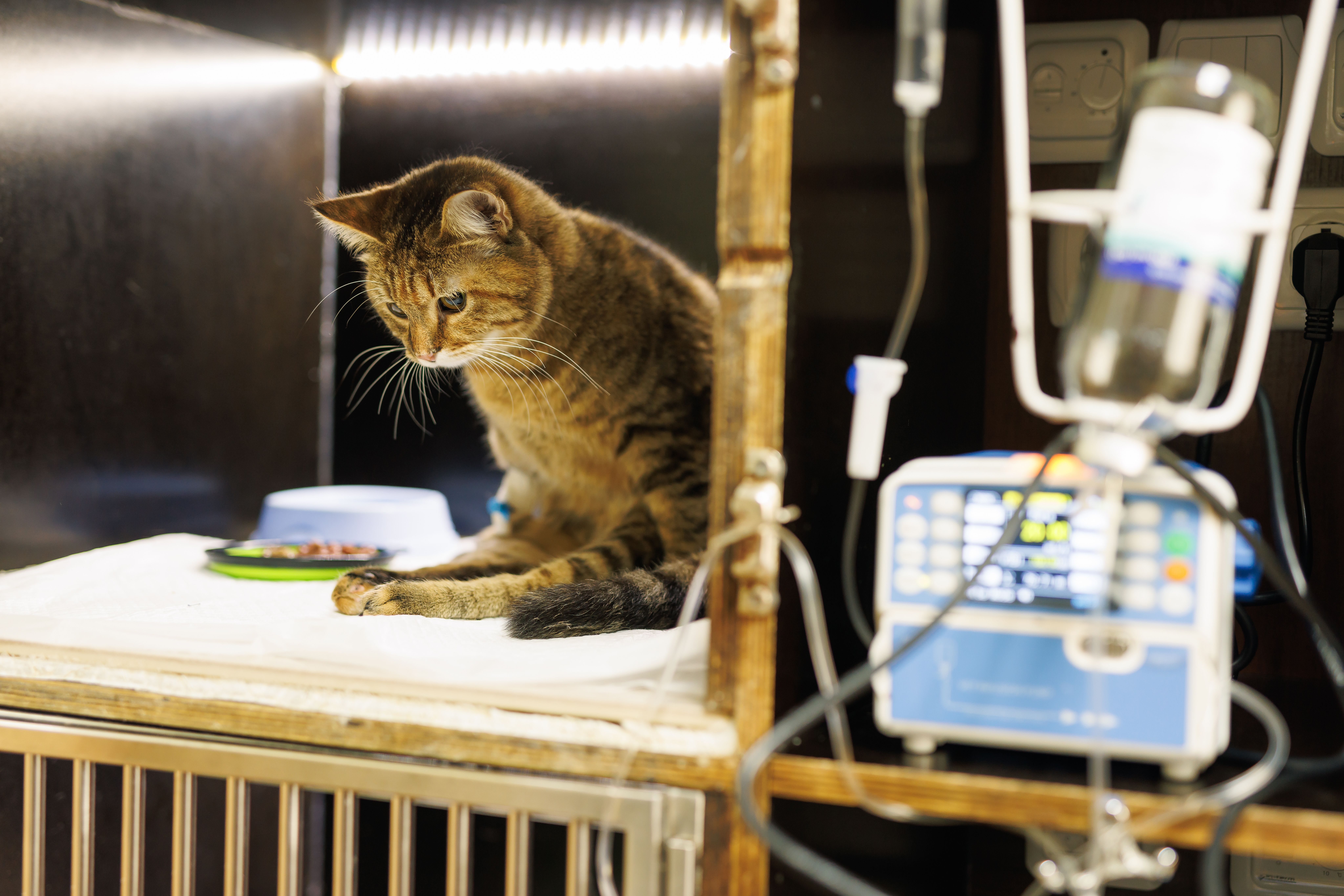Photo: st.kolesnikov/Adobe Stock

What kind of nutritional support should critically ill patients be receiving? In his lecture at the Fetch dvm360 Conference in Atlantic City, New Jersey, Walter L. Brown Jr, BS, RVTg, VTS (ECC), talked about how nutritional support, which may often fall in the hands of veterinary technicians, can be vital for the recovery of critical care patients.1
“A lot of our patients that are critical patients are experiencing some type of malnutrition,” Brown said during his lecture.1 “And here’s the thing about malnutrition: we don’t even have a definition for it. That’s how new nutrition is in veterinary medicine.”
Brown explained that patients who are critically ill will catabolize lean muscle, also known as ‘stress starvation,’ rather than using the body’s fats. In his lecture, Brown shared that studies show that 73% of critical care patients have a negative net protein loss. He explained that preserving lean muscle mass in these patients and reversing nutrient deterioration is essential for preventing malnutrition.
Three days of anorexia in patients is concerning. By the fifth day, it is considered urgent and requires nutritional intervention. “As quickly as we find out these patients are malnourished, we need to do some intervention,” emphasized Brown. According to Brown, the 3 key components of successful nutritional support are proper patient selection, a sound nutritional plan, and careful monitoring.
Before thinking about creating a nutrition plan however, veterinary professionals should first complete and/or consider the following1:
- Identify, understand, and treat the underlying cause of the malnutrition
- Fluid therapy
- Stabilize the patient, correcting electrolyte imbalances and acid-base disturbances
- Minimize metabolic derangement and catabolism of lean tissue
- Know that offering nutritional support to replenish body weight is not a priority in replenishing body weight
- Feeding an excessive number of calories to critically ill patients is not necessary, as this can lead to food aversion, metabolic complications, hepatic dysfunction, and increased carbon dioxide production.
Monitoring patients
“A nutritional plan does carry risk, ok?” Brown said during his session. As such, it is important to properly and consistently monitor patients.
“How are we monitoring [these patients]? “Are we giving food every few hours? Are we looking for food coming out of his nose?” posed Brown. He put forth the example of a patient with an esophagostomy (E) or a nasogastric (NG) tube who may have the tube coming out of their mouth due to vomiting or regurgitation, leading them to expel the tube. “These things happen, so we’ve got to monitor for that, right?” said Brown.
“We have to keep in mind, as [veterinary] nurses and technicians, what we are actually monitoring for. What should we be looking for when resuscitating these patients, right?” said Brown. He emphasized that the most important thing patients should be doing is eating on their own. Moreover, veterinary technicians should monitor body weight daily, taking into account fluid shifts.
Monitoring for GI stasis is also crucial, according to Brown. If the patient has GI stasis, continuing to feed them may cause further problems until the stasis has been resolved.
In his lecture, Brown explained that veterinary technicians should choose an appropriate nutrient route, and begin feeding as soon as the patient is stable. Feedings should be administered gradually “with a target level of nutrient delivery achieved over 48 to 72 hours.”
Nutrient requirements
Dogs should receive 4 to 6 g of protein per 100 kcal, accounting for 15% to 25% of their total energy requirements. Meanwhile, cats should receive a higher amount of protein, as 25% to 35% of their total energy requirements need to come from this source. According to Brown, 6 to 8 g per 100 kcal is the recommended amount. However, patients with a protein intolerance, such as those with hepatic encephalopathy, should receive less protein.
Calculating nutrient requirements
“RER should be used as a starting point for our critical patients,” said Brown. He explained that illness energy requirement (IER) is no longer being recommended as a starting point.
He provided the formula to calculate patients’ resting energy requirement (RER): RER = 70 x (current body weight in kgs).75. During his lecture, Brown recommended writing the formula on a piece of paper and keeping it at the clinic. “This is [a] piece of paper I want you to leave around. …Do your RER for all your patients,” he emphasized.
“Nutrition, of course, is integral in the outcome of our critical patients. That nutritional support is essential for the treatment plan. Metabolic response places, critical ills plays critical ill patients at risk about malnutrition,” concluded Brown. “Nutrition is a big component of our vein theory world, whether it be a general practice or critical care, [it is] the biggest thing in critical care, [that] we are still learning.”
Reference
Brown W. Feeding the critical patient. Presented at: Fetch Coastal; October 14-16, 2024; Atlantic City, NJ.
